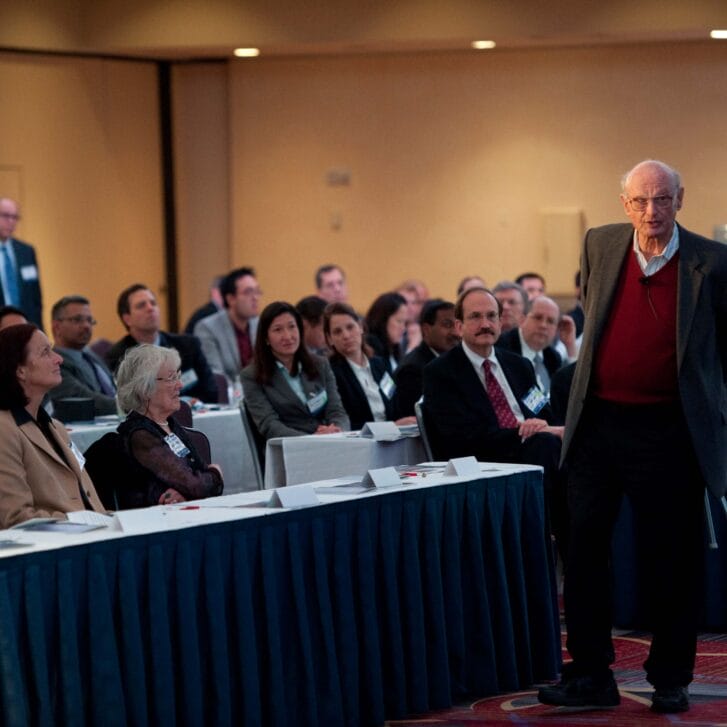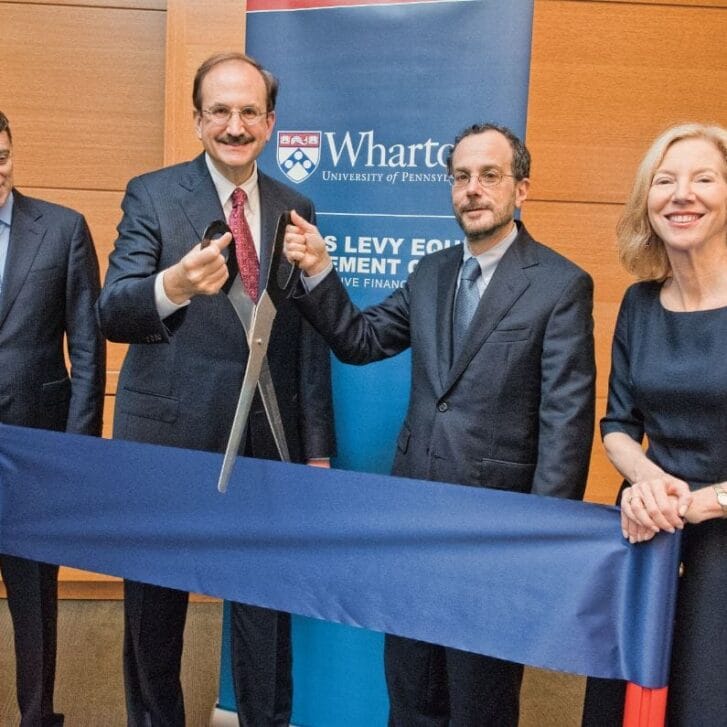During a call with Carleigh Jaques WG95 at her part-time residence in Spain, it became clear that her retirement has been anything but a sleepy siesta. Two years ago, Jaques stepped away from a 15-year tenure with Visa, where she held several senior executive roles and led the $23 billion acquisition of Visa Europe. Now, as she juggles a role on the Wharton AI and Analytics Initiative Advisory Board, learns two more Romance languages (Spanish and Italian on top of French), and tackles home remodeling projects, her golden years are beginning to mirror her working years in breadth and ambition. Or, as Jaques puts it, she’s just not “done” yet. In this interview with Wharton Magazine, Jaques discussed the importance of taking calculated risks, emerging opportunities and threats for payment companies in the age of AI, and how Wharton will shape the next generation of business leaders.
Wharton Magazine: What sparked your interest in the intersection of finance and technology before “fintech” was commonly recognized as a career path?
Carleigh Jaques: I worked at a boutique investment bank before business school in San Francisco. That was honestly before tech was cool. At Deutsche Bank, I was a technology investment banker. I did different parts of technology, whether it was data-center software, semiconductors, or mobile. I had done some work in financial technology and worked on the First Data LBO, which happened in 2007.
I had decided that I was going to leave investment banking, and I attribute a lot of it to the fact that I was turning 40. I felt like if I was going to make a transition, I needed to be super-conscientious and intentional about it. And I wanted to go corporate. During that period, that was kind of an unusual career move. Everybody who was moving from investment banking was going into private equity or venture. From my vantage point, Visa was a great fit because it was global. It was a big enough business to have an impact. At the time that I joined, Visa was a little bit on the fence on whether it was a financial-services company or a technology company. I felt really strongly that it was a technology company. A lot of my work there supported that vision.
That’s very much Visa’s positioning today: “Visa as a service.” That’s a very technology-centric positioning.
WM: In your role with Visa as Head of Global Corporate Development and Strategy, you led the acquisition of Visa Europe. Why do you think Visa has maintained the status of the world’s largest payment network for so long?
CJ: Your Visa card works everywhere. And that’s a very hard brand promise to deliver. The way payments happen in Japan is totally different from the way payments happen in Mexico, which is totally different from the way they might happen in South Africa. Being able to deliver the same experience for the consumer across all of those different geographies — and deliver it in a technology form factor that makes sense in that market, such as e-commerce, mobile, tap-to-pay — is a very tall order. And to do that at the level of resilience and security that Visa does is the notable capability that drives the growth and the strength of that business model.
WM: The Wharton AI and Analytics Initiative Advisory Board was created last year with you as one of its founding members. What opportunities do you see in how Wharton can lead this transformative moment of AI?
CJ: In my work with [WAIAI], a lot of what I can bring to bear is the view of an operator in technology and a non-U.S. view of privacy, data, and AI. There are a couple of other folks on that board as well who have an international background. It’s fascinating, and you learn something literally every day.
For Wharton, the opportunity is to create a generation of business leaders who, while not engineers per se, understand the potential of the technology and have a view of using it thoughtfully and responsibly. Deep partnerships between business, product, and technical folks is where the magic happens. How do you think about the different considerations that customers have? It may be around utility, privacy, ubiquity, convenience. Those are the business problems powered by the technology. And that’s the partnership: respecting each function’s domain and then getting the best out of that conversation together. Educating business leaders who can navigate and lead in these very dynamic environments is where I think the opportunity for Wharton is.
WM: How has payment technology evolved during your time with Visa?
CJ: I was active in Visa’s “network of networks” strategy. For many, many years — probably the first 50 years of Visa’s history — when you thought of a Visa transaction or functionality, it was only for a Visa-branded transaction. Now, Visa handles a number of different payment types; it might be another card network or a real-time payment capability in Brazil or India. It’s whatever the consumer loads into that digital wallet. Adding value to merchants, issuers, and consumers across all these transaction types is the type of evolution and leadership the company has demonstrated.
WM: In your last role with Visa before you retired in 2023, you focused on risk. What are the biggest challenges for payment companies today?
CJ: If you pull your debit card or your credit card out of your wallet today, you’re going to see a little chip on it. And that chip makes a face-to-face transaction incredibly secure. Visa and the other major card networks have done a fantastic job of that. Now fraud has migrated to other engagement models like digital or mobile. Think about digital and overlay AI and the ability to create a synthetic identity — there’s much more potential for fraud around things like that. Visa and all of the leading payment networks recognize that and are incredibly vigilant. Consumers must have confidence that they are protected. The good news is that the decades of knowledge from dedicated payments experts and new technologies and data sources are also being deployed to preserve consumer confidence and security. That work is never going to be done.
WM: You have a unique hobby of architecture. How did you develop interest and expertise in this field?
CJ: It runs in my family. My mother was a serial remodeler, and I definitely inherited that. I’ve built two houses from scratch, and I’m remodeling my house as we speak. I think environment has a lot to do with people’s well-being.
WM: What advice would you share for alumni who are considering the transition into retirement? What’s been the most challenging or rewarding aspect of this new chapter for you?
CJ: Well, I decided to move to a foreign country [laughs], which has been one of the best parts of the transition. When I have thought about retirement, continuing to do new things and keep learning has been my highest priority. Whether that’s moving to Spain, whether it is joining a board where I’m having a ton of fun but also learning from seasoned board members — that constant engagement does make things easier. Everybody has to pursue their passion. But I’m not ready to be, quote, “done.” I just view this as my fifth career. I was an investment banker, then I did corporate development, then I did strategy, then I was an operator, and now the board. I just view it as the next chapter, not the finale.

























